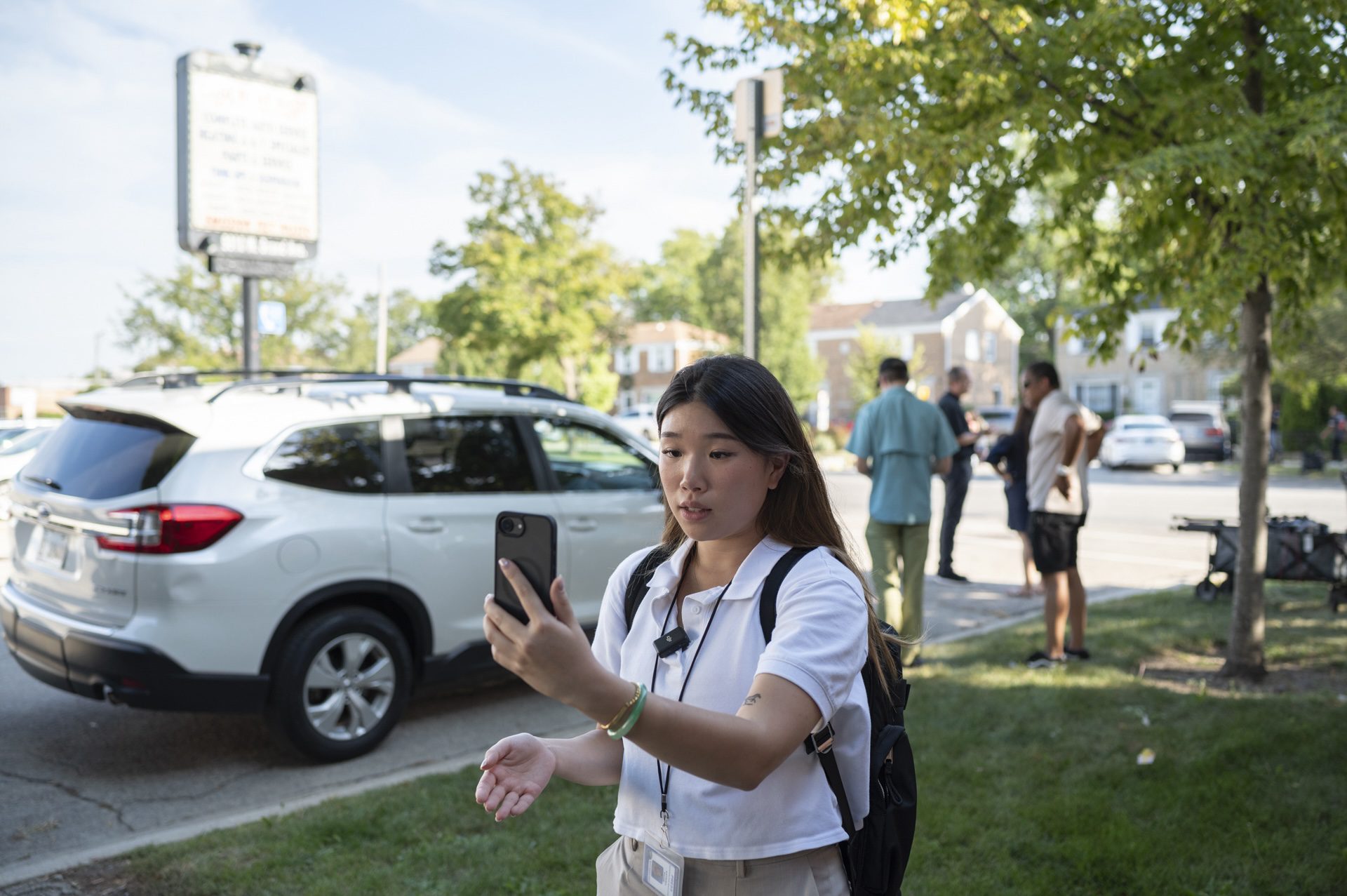 Max Herman/Borderless Magazine
Max Herman/Borderless MagazineAs Trump doubles down on his immigration crackdown, Borderless continues showing up to tell this country’s story through the eyes of our immigrant communities.
Borderless Magazine was born almost nine years ago as a promise to the future generation. I was pregnant with my second child at the time and had spent over a decade in journalism reporting on war and criminal justice in Chicago and Asia. In that time, I watched as our local news infrastructure crumbled and communities were abandoned by a consolidating media.
One in 3 Chicago families includes someone who was not born in the U.S. — yet our industry too often thinks of immigrants as an inconsequential minority, rather than an integral part of our city and a sizable voting population. When Trump enacted the Muslim Travel Ban in January 2017, our news outlets were caught off guard.
I founded Borderless’ predecessor with two other journalists because I knew we could do better. All communities in our city deserve access to credible news and information sources. And that includes our city’s young, multiracial and multicultural population, people like my own kids and the reporters in our newsroom.
Noticias que ponen el poder en el punto de mira y a las comunidades en el centro.
Suscríbase a nuestro boletín gratuito y reciba actualizaciones dos veces por semana.
Over the last eight years, Borderless has established itself as a veteran and leader in the news industry serving our immigrant communities. We are hired to teach other news outlets how to better report on and with immigrants through our Immigration Reporting Lab. We train the next generation of immigrant community journalists in our award-winning Pathways program.
We meet readers where they’re at with hard-hitting investigations and service journalism on our website, Instagram, TikTok, and in the streets through our field canvassers.
Our audience has grown tremendously.
We are now reaching about 240,000 people a month. Our audience is not only in Chicago, but nationwide, underlining the hunger for our brand of journalism. We’re unique in this space because our core audience is young, aged 18 to 44. And we’re attracting readers that most news outlets don’t reach: immigrants and their loved ones. Every story we publish is available in both English and Spanish, and Spanish speakers comprise roughly 40% of our audience.
This year has been incredibly hard as attacks on journalists and immigrants have escalated, spreading fear and uncertainty. ICE has become our nation’s largest law enforcement agency, with Trump declaring war on Chicago with “Operation Midway Blitz.”
Never before has a president painted a bullseye on a city like this. The region’s 1.7 million immigrants and their loved ones are in the crosshairs.
This includes our team. Our entire editorial team and most of our back office team come from immigrant communities.
Our families are withdrawing from daily life. One of our team members’ fathers has not left his house this year aside from going to work and the grocery store.
In September, an ICE agent shot and killed a Mexican immigrant — a father — in a Chicago suburb.
Parents are afraid to send their kids to school. Recently, ICE dragged a woman out of a daycare not far from our office.
Our reporters now carry gas masks and goggles when they go out to report, and journalists across the city have been injured by pepper balls and tear gas.
This week, the Chicago Sun-Times reported that the Trump administration may be giving Chicagoans a short reprieve. Many federal immigration agents are expected to leave Chicago for the winter, but they promise to return to the city with even more officers in the spring.
There’s another layer to this crisis: record-low distrust in the media itself.
So now, at the very moment when immigrants’ stories are most needed to counter harmful rhetoric, many families retreat into the shadows.
Trust is what’s missing. Trust is what’s needed most.
At this boiling point, Borderless is helping to fight fear with facts — by connecting the administration’s policies, government agencies’ practices, and their impact on the lived experiences of vulnerable communities. We are a veteran and a leader in this space, and a trusted source of credible, fact-based news and information for our diverse residents.
In the face of this year’s fire, we’ve fostered resilience. We have established our first fundraising team and set up the operational infrastructure that will enable us to continue growing for years to come.
Our stories have had a tangible impact on the lives of the 1.7 million immigrants who call this region home. From helping educate the public on their rights during immigration actions to changing the narrative around immigrants and connecting people to housing and food, Borderless serves communities with a wide array of news you can use, and we provide context for the rapid changes to our immigration system.
We have also spent this year developing our first strategic plan, which will provide the framework for expanding our newsroom and building resilient and sustainable infrastructure over the next three years.
Immigration is the story of today. But for Borderless, we’ll continue to keep our eyes on immigrant communities long after this news cycle moves on. That is our promise to our community: to provide facts, not fear. We are in this together. And we’re just getting started.

